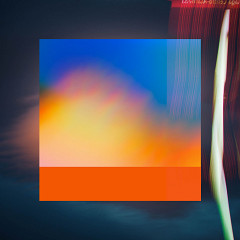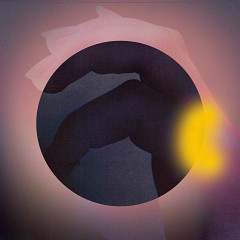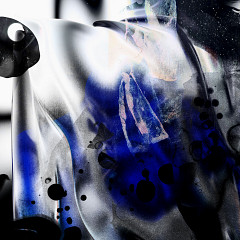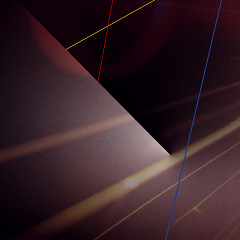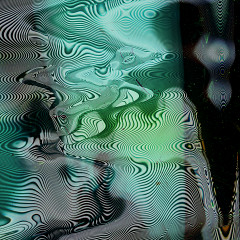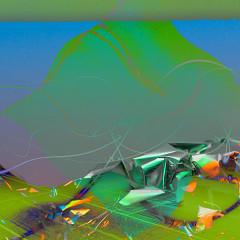Le résultat est d’une beauté éblouissante. Sans aucun doute la perle des nouvelles parutions de Ambiances Magnétiques. — Wonderous Stories, Italie
Hier wird im Detail deutlich, welche außerordentliche musikalische Leistung die Umsetzung all dieser Komposition tatsächlich darstellt: Dem Quatuor Bozzini und seinen Quintett-Mitstreitern ist dafür unbedingt Respekt zu zollen. — Klassik.com, Allemagne
Preis der deutschen Schallplattenkritik: Bestenliste, Mai 2009 ({lng:f/Prix de la critique de disques allemande: Choix du trimestre, mai 2009/lng}{lng:e/German Record Critics’ Award: Quarterly Critics’ Choice, May 2009/lng})
Prix Opus 2008-09: Disque de l’année — Finaliste
Sixième volume de la collection, Arbor Vitæ rend hommage au compositeur canado-américain James Tenney en réunissant dans un même opus l’intégrale de ses quatuors et quintettes. Les œuvres s’étendent sur une période de plus de cinquante ans, du premier quatuor à cordes écrit à l’âge de 21 ans, jusqu’à la dernière œuvre, posthume. À travers les phénomènes acoustiques et musicaux qu’il utilise, Tenney crée un espace sonore, large et ouvert et livre une musique rigoureuse et sensuelle à la fois. Nous sommes privilégiés et honorés d’avoir côtoyé ces œuvres de l’un des compositeurs nord-américains les plus marquants du 20e siècle.
- Compositeur·trice(s): James Tenney
- Interprète(s): Quatuor Bozzini, Isabelle Bozzini, Stéphanie Bozzini, Nadia Francavilla, Clemens Merkel, Rick Sacks, Eve Egoyan, Miriam Shalinsky
- Graphisme: Jean-François Denis
- SODEC
2 × CD (CQB 0806, 2008)
Disque 1: Quatuors
- 1Arbor Vitæ (2006), 13:10quatuor à cordesQuatuor Bozzini (Clemens Merkel, violon; Nadia Francavilla, violon; Stéphanie Bozzini, alto; Isabelle Bozzini, violoncelle)
- 2Saxony (1978-84), 23:54quatuor à cordes et délaiQuatuor Bozzini (Clemens Merkel, violon; Nadia Francavilla, violon; Stéphanie Bozzini, alto; Isabelle Bozzini, violoncelle)
- 3Stochastic String Quartet (1963), 2:48quatuor à cordesQuatuor Bozzini (Clemens Merkel, violon; Nadia Francavilla, violon; Stéphanie Bozzini, alto; Isabelle Bozzini, violoncelle)
- 4String Quartet in One Movement (1955), 3:30quatuor à cordesQuatuor Bozzini (Clemens Merkel, violon; Nadia Francavilla, violon; Stéphanie Bozzini, alto; Isabelle Bozzini, violoncelle)
- 5Koan for String Quartet (1984), 18:38quatuor à cordesQuatuor Bozzini (Clemens Merkel, violon; Nadia Francavilla, violon; Stéphanie Bozzini, alto; Isabelle Bozzini, violoncelle)
Disque 2: Quintettes
- 1Cognate Canons (1993), 24:58quatuor à cordes et percussionsQuatuor Bozzini (Clemens Merkel, violon; Nadia Francavilla, violon; Stéphanie Bozzini, alto; Isabelle Bozzini, violoncelle); Rick Sacks, percussions
- 2Diaphonic Study (1997), 18:25quatuor à cordes et pianoQuatuor Bozzini (Clemens Merkel, violon; Nadia Francavilla, violon; Stéphanie Bozzini, alto; Isabelle Bozzini, violoncelle); Eve Egoyan, piano
- 3Quintext I-V: Five Textures (1972), 30:33quatuor à cordes et contrebasseQuatuor Bozzini (Clemens Merkel, violon; Nadia Francavilla, violon; Stéphanie Bozzini, alto; Isabelle Bozzini, violoncelle); Miriam Shalinsky, contrebasse
- 3
- 4
- 5
- 6
- 7Spectra for Harry Partch, 9:14
- Étiquette: Collection QB
- CQB 0806
- 2008
- UCC 771028370627
- 125 mm × 125 mm × 7 mm
- 60 g
Sur le web
Quelques articles recommandés
La presse en parle
Critique
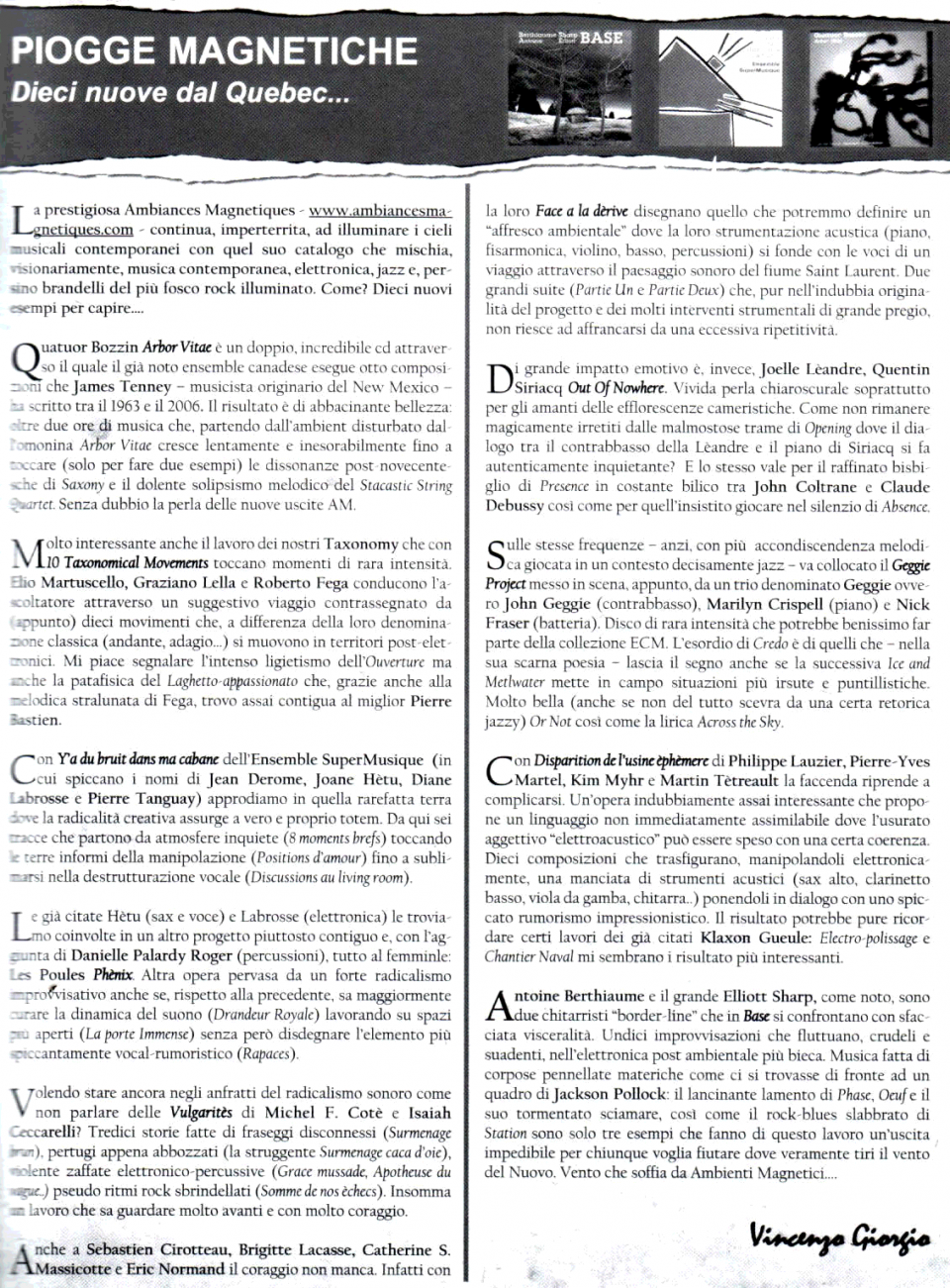
Arbor Vitae (Quatuor Bozzini) est un album double incroyable à travers lequel l’ensemble canadien déjà remarqué exécute huit compositions de James Tenney — compositeur originaire du Nouveau-Mexique — écrites entre les années 1963 et 2006. Le résultat est d’une beauté éblouissante: au-delas de deux heures de musique qui, partant de l’ambiance troublée de Arbor Vitae, croît lentement et inexorablement jusqu’à atteindre (en ne donnant que deux exemples) les dissonances post-années quatre-vingt-dix de Saxony et le douloureux solipsisme mélodique du Stochastic String Quartet. Sans aucun doute la perle des nouvelles parutions de collection qb.
Das Innenleben der Klänge
Dass das kanadische Quatuor Bozzini hierzulande nur am Rande wahrgenommen wird, hat sicher nichts mit der Qualität des Vortrags zu tun. Vielleicht liegt es eher am nicht ganz alltäglichen Repertoire, das die vier Musiker Clemens Merkel (Violine), Nadia Francavilla (Violine), Stéphanie Bozzini (Viola) und Isabelle Bozzini (Violoncello) ins Zentrum ihrer interpretatorischen Tätigkeit stellen. Seit seiner Gründung im Jahr 1999 hat das Quartett eine ganze Reihe ausgezeichneter CDs mit zum Teil sehr selten zu hörenden Kompositionen in dem ensembleeigenen Label collection quatuor bozzini im Vertriev von DAME (actuellecd.com) eingespielt, darunter ein ‚Portrait Montréal’ mit Werken von Claude Vivier, Jean Lesage, Michael Oesterle und Malcolm Goldstein (2004), eine fulminante Neuaufnahme von Steve Reichs Different Trains, die sich auch auf eine Neuproduktion der zur Komposition gehörenden Zuspielbänder erstreckte (2005), sowie die Platte Le livre des mélancolies mit Werken von Piotr Grella-Mozejko und Jean Lesage (2008).
Ein amerikanischer Avantgardist
Mit ihrer im vorigen Jahr erschienenen Produktion Arbor Vitae widmen sich die Musiker ausschließlich dem Schaffen des Amerikaners James Tenney (1934—2006), der wie nur wenige andere seiner Kollegen eine genuin amerikanische Tradition ‚avantgardistischen’ Komponierens verkörperte. Gegenstand der bemerkenswert runden und sehr hörenswerte Doppel-CD sind Tenney Streichquartette und Quintette mit Streichquartettbeteiligung — eine Musik, die es dem Hörer allerdings nicht gerade leicht macht, sondern ihn mit ungewohnten Klangsituationen jenseits des temperierten Tonsystems konfrontiert. Es ehrt die Musiker, dass sie sich mit dieser anspruchsvollen Musik so intensiv auseinandergesetzt haben, zumal die Umsetzung die Fähigkeiten des Ensembles bis ins äußerste Extrem herausfordert. Die Präzision der Ausführung ist außerordentlich und verdeutlicht, mit welch großem Ernst das Quatuor Bozzini diese Aufgabe in Angriff genommen hat.
Viele von Tenney Stücke ähneln sich insofern, als sie einen sehr einfachen Formverlauf umschreiben, bei dem ein bestimmtes Prinzip solange wiederholt wird, bis gewissermaßen eine Sättigung eingetreten ist, der Prozess sich auf ähnliche Weise umkehrt und zu seinem Beginn zurückführt oder einfach abbricht. Das komplexe Geschehen findet daher im Innern der Klänge statt, denn der Komponist verwendet immer wieder Elemente wie reine (nicht temperierte) Stimmung und mikrotonale Harmonik. Hat man sich der Hörer erst einmal auf diese Voraussetzungen eingelassen, öffnet sich eine faszinierende Welt voller überraschender Schattierungen, wie sie besonders in Saxony für Streichquartett und Delay (1978-84) zum Zuge kommt: Hier wird über einem kontinuierlich unter Ausnutzung live-elektronischen Delays geformten Grundton ein ständig sich wandelndes Farbspektrum erzeugt, dessen Changieren durch Hinzutreten weiter entfernter (und nach unten transponierter) Obertöne immer vielfarbiger wird, um dann am Ende wieder in den einfachen Klang aus Grundton und Oktave mündet.
Ebenso wirksam ist aber auch die Komposition Arbor Vitae (2006), von Tenney für das Quatuor Bozzini komponiert, die einen einfachen Bogen beschreibt. Dieser beginnt mit Flageoletts, die in höchster Höhe lokalisiert sind und aufgrund ihres Rauschanteils kaum wahrnehmbar sind, erst ganz allmählich durch allmähliche Erschließung der tieferen Registerbereiche und durch dynamisches Anwachsen in den Fokus der Wahrnehmung rücken, um sich danach erneut Ende nach oben zu entfernen. Und in Koan for String Quartet (1984) färbt der Komponist einen pulsierend dargebotenen Intervallrahmen durch eine gleitend den Tonraum zwischen den Rahmenintervallen durchschreitende Stimme ein und berührt dabei eine Vielzahl ungewöhnlicher Intervallbeziehungen. Das String Quartet in One Movement (1955) zeigt den 21-jährigen Tenney dagegen noch im Schatten einer expressionistischen, von Béla Bartók beeinflussten Musiksprache auf der Suche nach dem eigenen Weg, während das kurze Stochastic String Quartet (1963) einen rhythmisch komplexen Versuch darstellt, den beim Komponieren den Computer zum Einsatz zu bringen.
Streichquartett und …
Die zweite der beiden CDs beinhaltet jene Kompositionen Tenney, bei denen das Streichquartett durch jeweils unterschiedliche Instrumente zu einer Quintettbesetzung ergänzt wird, woraus ganz andere musikalische Fragestellungen resultieren. Die klanglichen Ergebnisse unterscheiden sich dementsprechend nicht unbeträchtlich voneinander: Cognate Canons für Streichquartett und Schlagzeug (1994; mit Rick Sacks, Schlagzeug) erweist sich als Verschränkung von crescendierenden, harmonisch immer anders gearbeiteten Streicherklangflächen und Schlagzeugaktionen, zwischen denen die Pizzicati der Streicher als eine Art verbindendes Elemente erklingen. Die Diaphonic Study für Streichquartett und Klavier (1997; mit Eve Egoyan, Klavier) bezieht ihren Reiz hingegen aus dem Gegenüber des temperiert gestimmten Tasteninstruments und der komplexen, auf Mikrointervallen basierenden Harmonik der Streicher, wodurch zum Teil extreme harmonische Spannungszustände ausprägt werden.
Zu den eindrücklichsten Werken der Veröffentlichung gehört schließlich Quintext I-V: Five Textures für Streichquartett und Kontrabass (1972; mit Miriam Shalinsky, Kontrabass), eine Abfolge von sehr individuell geformten Studien, die völlig auf melodische Entwicklungen und dramatische Momente verzichten. Stattdessen treten, verstärkt durch eine in die in die Bassregion erweiterte Instrumentenpalette, essenzielle Klangcharakteristika der Streicher in den Mittelpunkt, die — worauf die Widmung der einzelnen Stücke an bedeutsame Komponistenkollegen des 20. Jahrhunderts hinweist — unter der Perspektive bestimmter ästhetischer Ideen betrachtet werden. Hier wird noch einmal im Detail deutlich, welche außerordentliche musikalische Leistung die Umsetzung all dieser Komposition tatsächlich darstellt: Dem Quatuor Bozzini und seinen Quintett-Mitstreitern ist dafür unbedingt Respekt zu zollen. Wer sich vor neuen Entdeckungen nicht scheut, sollte sich die Gelegenheit nicht entgehen lassen und in diese Produktion hineinhören. Schade ist einzig, dass der aufs Innere der Kartonhülle gedruckte (französische und englische) Begleittext als Einführung in Tenney Schaffen sehr mager ist.
Review
Let’s get the “review” out of the way first, so we can talk about the music. This two-CD set of quartets and quintets by the American composer James Tenney (1934-2006) is one of the finest recordings to have come my way recently, essential listening not only for anyone interested in Tenney’s music or in microtonality in general, but for anyone wanting to understand some of the ways in which new music has developed in the past three or four decades. That’s a weighty claim but I stand by it. Relatively little played for much of his lifetime, Tenney’s music became better known only in the last dozen years of his life and now the ears of the new music world are wide open to it. With this new recording we have a Tenney release that offers superb performances of a collection of some of his finest, most individual works (here represented by Quintext I-V: Five Textures, Saxony, and Koan) together with some tougher nuts that nonetheless prove tastier as time goes by (works like Cognate Canons, Diaphonic Study, and his last work, the string quartet Arbor Vitae). Previous fine Tenney discs have appeared (Marc Sabat and Stephen Clarke’s recording of the violin and piano music on Hat Hut, the Barton Workshop’s of the Postal Pieces on New World Records, among others), but for all the excellence of the playing these earlier discs have often tended to offer works from what feels to me like the periphery of Tenney’s achievement rather than the centre. If you don’t like the music on this Bozzini Quartet release, you can conclude that Tenney is just not for you. The Montréal-based Bozzinis have established themselves beyond question as one of the finest new music quartets on the scene, skilful and dedicated young players with a consistently adventurous approach to repertoire. Their performances here are never less than outstanding.
Tenney’s explorations of microtonal tunings began in 1972, more than a decade after his brief and argument-filled “apprenticeship” with Harry Partch at the University of Illinois in 1959. Tenney’s theoretical writings offer an expansion of many of Partch’s tuning concepts, placing Partch’s interest in extended just intonation (“extended” through the use of harmonies derived from the seventh and eleventh partials) in a broader conceptual framework that acknowledges the complexities of our perception of pitch and the sophisticated mechanisms our brain uses to process aural data. Not all of Tenney’s post-1972 works employ just tuning, although most of them use harmonic relationships made possible by the expanded pitch world of microtonality — more specifically, through a particular navigation of that world by means of a pitch matrix that Tenney termed “harmonic space”, which offers quantitative measures of “harmonic distance” between two or more pitches. These theoretical ideas, brought to sonorous life in his compositions, are described in his article “John Cage and the theory of harmony” — Soundings 13: The Music of James Tenney, ed. Peter Garland, pp. 55—83 (Santa Fe, NM: Soundings Press, 1984).
At the conceptually simpler end of Tenney’s spectrum is a work like Saxony (1978), originally for saxophone with tape delay but heard here in one of its various possible incarnations, for string quartet with delay. This piece, like several others laced through his output, takes its pitch material from a single harmonic series. The series is revealed gradually, in an ever-more-dense texture, with the delay system catching the long tones and phrases of the players and re-injecting them into the texture. Characteristically for Tenney, this music avoids drama or incident (more so than does much of the contemporaneous “spectral music” from France, with which it otherwise has several things in common) and offers instead a rich listening context in which the listener’s perceptual experience seems to count for more than the decoding of any “message” from the composer. Koan, a 1984 reworking for string quartet of a much earlier solo violin piece, is a twenty-minute exercise in slowly moving string glissandi set against steady drone pitches. Conceptually elegant and perceptually engaging — if one is in the mood for it — the work can be a real challenge for many audiences not sympathetic to its particular sort of austerity. The Bozzinis play it superbly (with special praise due to violinist Clemens Merkel, who has to negotiate slow glissandi evenly and musically over long spans of time in a steady eighth-note rhythm continually crossing two strings).
For me the real gem of this set, and practically a textbook of Tenney techniques, is the 35-minute Quintext I-V: Five Textures, never before recorded (and rarely, if ever, played complete). Subtitled “five textures for string quartet and bass”, this dates from the all-important year 1972. The individual movements are: “Some Recent Thoughts for Morton Feldman”, “Clouds for Iannis Xenakis”, “A Choir of Angels for Carl Ruggles”, “Parabolas and Hyperbolas for Edgard Varèse” and “Spectra for Harry Partch”. As the subtitle indicates, each movement creates and sustains a texture without dramatic change of any kind, and each has a connection to the work of the composer invoked in its title — although Tenney’s homage could never actually be mistaken for the music of the composer concerned. The first movement is a study in soft, sustained, non-developmental, dissonant vertical harmonies, an obsession in much of Feldman’s early work (especially, perhaps, the Vertical Thoughts series, from which Tenney derived his title). However, in “Some recent Thoughts for Morton Feldman”, the harmonies specified are microtonal, and tuned just intonation (using a scale of intervals analogous to the first 13 odd-number harmonics), one of Tenney’s own obsessions, but a concept totally at odds with Feldman’s devotion to equal temperament. The second movement is a tapestry of sound and silence, with the ‘sound’ sections being a homage to the string cluster textures of Xenakis’s Metastasis and other works, albeit randomly derived. The third movement is a sort of textural parody of Ruggles’s Angels, this time involving actual quotations of chords from Ruggles’s score, though once again in just intonation; it is played sul ponticello throughout, invoking the muted brass of the original. The fourth movement, with its continual but irregular glissandi finally converging around middle C, evokes the parabolas and hyperbolas that Varèse wanted to create in sound by use of instruments like the siren; again, however, the movement is technically speaking almost antithetical to Varèse’s own compositional methods, with its use of graphic notation and consequent degree of randomness. Finally, “Spectra for Harry Partch” proposes yet another sort of homage. In terms of its sonority and its compositional approach the piece is quite far from the sound of Partch’s music, yet the complex scordatura that Tenney specifies for the strings yields music that uses the most complex fabric of just intervals he had so far employed (surpassing in complexity, thanks to its use of intervals derived from prime number partials as high as the thirteenth, the harmonic resources of Partch’s own musical language).
The two other quintets on this disc are much later works. Cognate Canons (1993), which adds a percussionist to the quartet, is dedicated to Nancarrow, some of whose rhythmic techniques it employs. (Among his many other achievements Tenney was among the first to study the music of the long-neglected Nancarrow, contributing detailed liner notes to the recording of Nancarrow’s Studies for Player Piano released by Wergo in the late 1980s.) Tenney gave me a cassette of Cognate Canons shortly after its premiere (by the Arditti Quartet and Robyn Schulkowsky), but it has taken me all these years to warm to it — here the persuasive playing of the Bozzinis and the sympathetic sound of the recording (by Hessischer Rundfunk in Frankfurt) do much to help a work whose material at first can seem rather anonymous and even stilted, its rhythms well calculated but not especially vibrant. The piano quintet Diaphonic Study is a thorny (and perhaps overly prolonged) exercise in dissonant counterpoint of the sort explored by Ruth Crawford and her husband Charles Seeger earlier in the 20th century, here recast in a microtonal tuning system. This work seems, at least initially, to resist straightforward aural comprehension in the way that Saxony or Koan positively revel in it, although for those listeners prepared to invest the necessary time Diaphonic Study offers its own particular rewards.
The set also offers two early, short quartets — the String Quartet in One Movement of 1955 (a student piece; interesting, but to my ears not really more), and the Stochastic String Quartet of 1963, one of Tenney’s (and the world’s) first computer-generated compositions. While perhaps not especially engaging as a listening experience, the Stochastic String Quartet is representative of a way of working by means of which Tenney creates a field of musical experience mid-way between the architectural calculations of Xenakis and the intention-free indeterminacy of Cage. His last work, the string quartet Arbor Vitae, like the Stochastic String Quartet of more than forty years earlier, is also algorithmically derived, its expanding/contracting pitch range and increasing/decreasing temporal density having been worked out with the programming skills of the young composer Michael Winter during Tenney’s last illness in the summer of 2006. It’s a piece I found hard to make much sense of at first but, here again, repeated listenings reveal a world of sonic fascination and ever-more-audible structure. The Bozzinis commissioned Arbor Vitae, and their stunning recording of it and the seven other works on these discs is a monumental achievement, a fitting testimony to a composer whose real stature is becoming clearer with every year that passes.
Le CD de la semaine
Immense compositeur de la seconde moitié du vingtième siècle, James Tenney fut l’un des derniers géants de la musique contemporaine. Disparu en 2006, son œuvre demeure incompréhensiblement sous-documentée sur le plan discographique. Le bien avisé Quatuor Bozzini entend bien changer la donne en nous livrant rien moins que l’intégrale des pièces pour quatuor à cordes et quintet, la plupart inédites en CD. Que l’on parle ici des compositions rassemblées ou du groupe chargé de leur interprétation, une chose est sûre: l’ensemble est prodigieux!
C’est un événement que la parution de ce double CD dans la Collection QB, dont les initiales (Quatuor Bozzini) nous rappellent que la formation montréalaise est aux commandes de la direction artistique. Possédant une affinité évidente pour l’œuvre de Tenney, Nadia Francavilla, Clemens Merkel (violons), Stéphanie Bozzini (alto) et Isabelle Bozzini (violoncelle) font preuve ici d’une précision et d’une limpidité qui requièrent, à l’évidence, la maîtrise absolue de leurs instruments mais, surtout, l’appropriation de la pensée intime du compositeur. Manifestation de cette alchimie: la pièce qui ouvre le recueil et lui donne son titre, Arbor Vitae (2006), commande du quatuor et œuvre ultime de Tenney qui n’a vu le jour que de manière posthume. Une apogée sereine où de longues et perçantes intonations forment une trame harmonique qui se déploie tel un rhizome laissant entrevoir, à chacun de ses embranchements, un microcosme sonore. A l’autre extrémité du spectre, le String Quartet in One Movement (1955) est d’avantage sous l’influence de Webern ou de Bartók et offre rétrospectivement un très beau portrait de l’artiste en jeune homme. Le sombre et bourdonnant Saxony se construit lentement par le flux et le reflux de vagues microtonales dont l’accumulation décalée forme une structure hypnotique. Un principe similaire est utilisé pour Koan for String Quartet qui réconcilie tout autant sérialisme et minimalisme en sillonnant les discrètes variations d’un mouvement perpétuel. Le second CD voit le quatuor augmenté par l’addition d’un percussionniste (Rick Sacks) sur Cognate Canons, d’une pianiste (Eve Egoyan) sur Diaphonic Studies ou d’une contrebassiste (Miriam Shalinsky) sur Quintext I-V: Five Textures. Les préoccupations restent les mêmes: exploration obsessionnelle des dissonances, réévaluation permanente des systèmes de composition et fascination infinie pour la prégnance du timbre. La dernière pièce, une suite de cinq études, fait écho à autant d’inspirateurs: Ruggles, Varèse, Partch, Xenakis et Feldman, reliant ces créateurs de génie par une ligne plus droite qu’il n’y parait et y en inscrivant son créateur par la même occasion. Plus bel hommage à James Tenney n’avait peut être jamais été rendu.
Piogge magnetiche. Dieci nuove dal Québec.
La prestigiosa Ambiances Magnétiques continua, imperterrita, ad illuminare i cieli musicali contemporanei con quel suo catalogo che mischia, visionariamente, musica contemporanea, elettronica, jazz e, persino brandelli del più fosco rock illuminato. Come? Dieci nuovi esempi per capire…
Arbor Vitæ (Quatuor Bozzini) è un doppio, incredibile cd attraverso il quale il già noto ensemble canadese esegue otto composizioni che James Tenney - musicista originario del New Mexico - ha scritto tra il 1963 e il 2006. Il risultato è di abbacinante bellezza: oltre due ore di musica che, partendo dall’ambient disturbato dall’omonina Arbor Vitae cresce lentamente ed inesorabilmente fino a toccare (solo per fare due esempi) le dissonanze post-novecentesche di Saxony e il dolente solipsismo melodico del Stochastic String Quartet. Senza dubbio la perla delle nuove uscite AM.
Molto interessante anche il lavoro dei nostri Taxonomy che con 10 Taxonomical Movements toccano momenti di rara intensità. Elio Martusciello, Graziano Lella e Roberto Fega conducono l’ascoltatore attraverso un suggestivo viaggio contrassegnato da (appunto) dieci movimenti che, a differenza della loro denominazione classica (andante, adagio…) si muovono in territori post-elettronici. Mi piace segnalare l’intenso ligietismo dell’Ouverture ma anche la patafisica del Larghetto-appassionato che, grazie anche alla melodica stralunata di Fega, trovo assai contigua al miglior Pierre Bastien.
Con Y’a du bruit dans ma cabane dell’Ensemble SuperMusique (in cui spiccano i nomi di Jean Derome, Joane Hétu, Diane Labrosse e Pierre Tanguay) approdiamo in quella rarefatta terra dove la radicalità creativa assurge a vero e proprio totem. Da qui sei tracce che partono da atmosfere inquiete (8 moments brefs) toccando le terre informi della manipolazione (Positions d’amour) fino a sublimarsi nella destrutturazione vocale (Discussion au living room).
Le già citate Hétu (sax e voce) e Labrosse (elettronica) le troviamo coinvolte in un altro progetto piuttosto contiguo e, con l’aggiunta di Danielle Palardy Roger (percussioni), tutto al femminile: Les Poules. Phénix è altra opera pervasa da un forte radicalismo improvvisativo anche se, rispetto alla precedente, sa maggiormente curare la dinamica del suono (Grandeur Royale) lavorando su spazi più aperti (La porte immense) senza però disdegnare l’elemento più spiccantamente vocal-rumoristico (Rapaces).
Volendo stare ancora negli anfratti del radicalismo sonoro come non parlare delle Vulgarités di Michel F Côté e Isaiah Ceccarelli? Tredici storie fatte di fraseggi disconnessi (Surmenage brun), pertugi appena abbozzati (la struggente Surmenage caca d’oie), violente zaffate elettronico-percussive (Grace maussade, Apothéose du vague…) pseudo ritmi rock sbrindellati (Somme de nos échecs). Insomma un lavoro che sa guardare molto avanti e con molto coraggio.
Anche a Sébastien Cirotteau, Brigitte Lacasse, Catherine S Massicotte e Éric Normand il coraggio non manca. Infatti con la loro Face à la dérive disegnano quello che potremmo definire un “affresco ambientale” dove la loro strumentazione acustica (piano, fisarmonica, violino, basso, percussioni) si fonde con le voci di un viaggio attraverso il paesaggio sonoro del fiume Saint-Laurent. Due grandi suite (Partie Un e Partie Deux) che, pur nell’indubbia originalità del progetto e dei molti interventi strumentali di grande pregio, non riesce ad affrancarsi da una eccessiva ripetitività.
Di grande impatto emotivo è, invece, Out Of Nowhere, di Joëlle Léandre, et Quentin Sirjacq. Vivida perla chiaroscurale soprattutto per gli amanti delle efflorescenze cameristiche. Come non rimanere magicamente irretiti dalle malmostose trame di Opening dove il dialogo tra il contrabbasso della Léandre e il piano di Sirjacq si fa autenticamente inquietante? E lo stesso vale per il raffinato bisbiglio di Presence in costante bilico tra John Coltrane e Claude Debussy così come per quell’insistito giocare nel silenzio di Absence.
Sulle stesse frequenze - anzi, con più accondiscendenza melodica giocata in un contesto decisamente jazz - va collocato il Geggie Project messo in scena da John Geggie (contrabbasso), Marilyn Crispell (piano) e Nick Fraser (batteria). Disco di rara intensità che potrebbe benissimo far parte della collezione ECM. L’esordio di Credo è di quelli che - nella sua scarna poesia - lascia il segno anche se la successiva ce and Meltwater mette in campo situazioni più irsute e puntillistiche. Molto bella (anche se non del tutto scevra da una certa retorica jazzy) Or Not così come la lirica Across the Sky.
Con Disparition de l’usine éphémère di Philippe Lauzier, Pierre-Yves Martel, Kim Myhr e Martin Tétreault la faccenda riprende a complicarsi. Un’opera indubbiamente assai interessante che propone un linguaggio non immediatamente assimilabile dove l’usurato aggettivo “elettroacustico” può essere speso con una certa coerenza. Dieci composizioni che trasfigurano, manipolandoli elettronicamente, una manciata di strumenti acustici (sax alto, clarinetto basso, viola da gamba, chitarra…) ponendoli in dialogo con uno spiccato rumorismo impressionistico. Il risultato potrebbe pure ricordare certi lavori dei già citati Klaxon Gueule: Électro-polissage e Chantier naval mi sembrano i risultato più interessanti.
Antoine Berthiaume e il grande Elliott Sharp, come noto, sono due chitarristi “border-line” che in Base si confrontano con sfacciata visceralità. Undici improvvisazioni che fluttuano, crudeli e suadenti, nell’elettronica post ambientale più bieca. Musica fatta di corpose pennellate materiche come ci si trovasse di fronte ad un quadro di Jackson Pollock: il lancinante lamento di Phase e il suo tormentato sciamare, così come il rock-blues slabbrato di Station sono solo tre esempi che fanno di questo lavoro un’uscita impedibile per chiunque voglia fiutare dove veramente tiri il vento del Nuovo. Vento che soffia da Ambienti Magnetici…
Modern Composition
This two CD set documents American composer James Tenney’s — once described as the New York School’s fifth Beatle — complete music for string quartet and quintet, including his last completed work before his death in 2006, Arbor Vitae. This music is unique, with awesome performances by Quatuor Bozzini, but there are a few points of order to be raised nevertheless. The flimsy cardboard packaging into which the two CDs are stuffed offers no room for proper documentation of the music and, worse still, James Tenney’s name has been printed in such diminutive text on the front cover, it’s easy to overlook that this is a Tenney album at all. These details of presentation matter more with Tenney that for many composers. A work like Koan has a beautiful simplicity in the hearing, but if it’s pointed out that Tenney is using a mathematical process to generate a line that perpetually ascends, an extra layer of understanding is achieved. Arbor Vitae itself and Saxony, written 20 years previously, are sonic monoliths that twist through space motored by infinitesimally small graduations of tuning, changes that are felt more subliminally than actually heard. The set also includes five portrait-like pieces dedicated to Tenney’s mentors and inspirations (Feldman, Xenakis, Ruggles, Varèse, Partch), and the Diaphonic Study for piano and string quartet trades the piano’s equal temperament against subtler tunings in the string quartet: the punchline (and aural illusion) being, it’s the piano that sounds like it is in microtonal nirvana.
Review
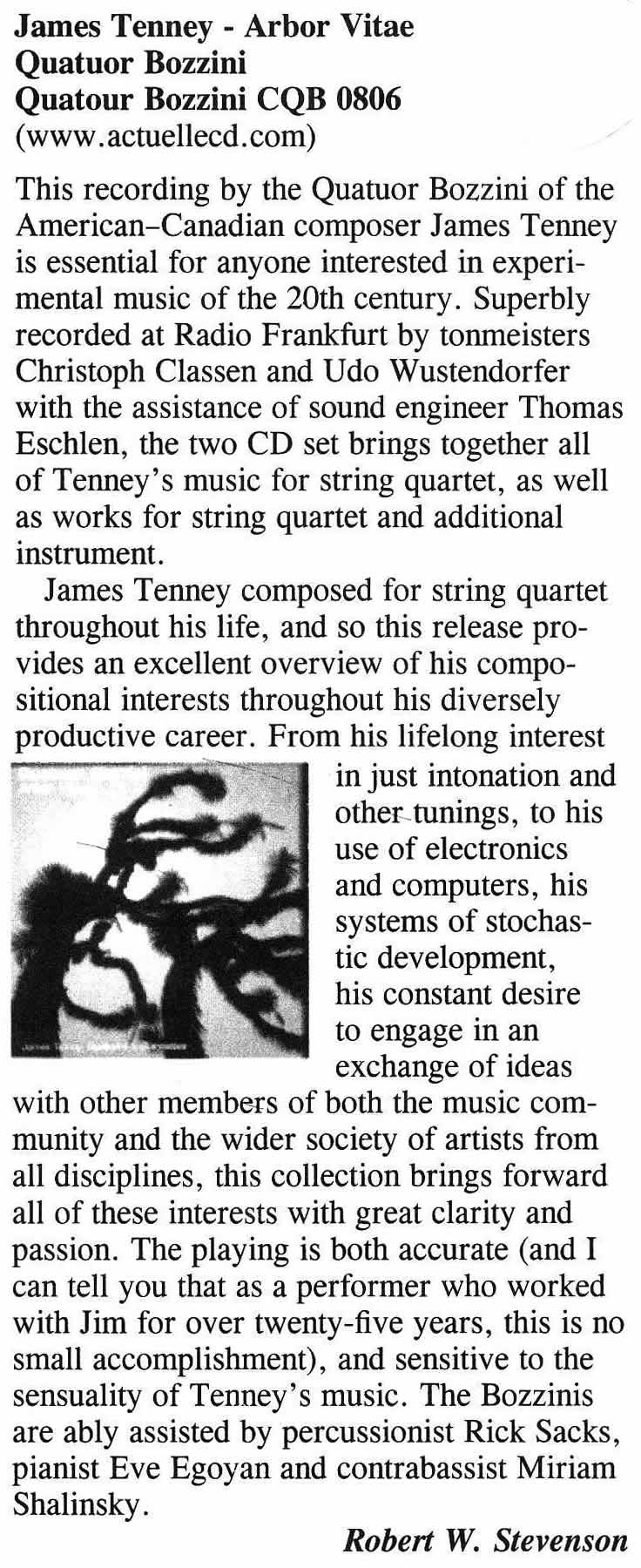
Review
Although he was born, and died, an American, composer/theorist James Tenney earned a warm spot in Canada’s musical psyche for his tenure as a professor at Toronto’s York University. And it is a motivating mix of affection and respect that moved Montréal-based string quartet Quatuor Bozzini to produce this reverently mounted two-CD collection of Tenney’s entire work of quartet/quintet pieces. Spanning five decades, Arbor Vitæ includes the piece of the same name composed in 2006, the last year of Tenney’s life, an ethereal waving and weaving of microtones, the mid-period Saxony, using tape delay and an extended tamboura-like drone’s unfurling, and early work String Quartet in One Movement from 1955. The foursome grow to a quintet with the addition of percussionist Rick Sacks on 1995’s Cognate Canons and 1997’s Diaphonic Study includes ever-expansive pianist Eve Egoyan. Quatuor Bozzini play every note with microscopic attention to detail and nuance, making even the smallest gesture contribute to this finely faceted gem. But one drawback is Tenney’s penchant for homage, which can be derivative, sometimes of sources other than the composer being honoured. This music is cerebral, no doubt about it, but with the likes of former premier Mike Harris itching to exert an anti-intellectual influence, maybe some grey cell stimulation is just what we need.
Review

Critique

Altrisuoni
In questo doppio il Quatuor Bozzini di Stéphanie e Isabelle Bozzini si cimenta nell’impresa di riprodurre l’intero corpus per quartetti e quintetti d’archi di James Tenney. Le due sorelle (rispettivamente viola e violoncello), coadiuvate da Clemens Merkel e Nadia Francavilla (entrambe al violino) e con pochi altri interventi di percussioni, piano e contrabbasso, ripercorrono la produzione del compositore (l’arco di tempo è 1955-2006) sottolineandone la grande forza evocatrice, quasi maieutica: lenti e a tratti quasi impercettibili movimenti che avanzano ponendosi e sovrapponendosi in una tensione paradossalmente e/statica. Dalle composizioni più vecchie a quelle esplicitamente influenzate dai coevi esperimenti elettronici e minimalisti (’60 e ’70) fino a quelle che includono anche percussioni e piano (anni ’90), un viaggio capace di esaltare e lasciare basiti di fronte al farsi di diversi capolavori.
Review
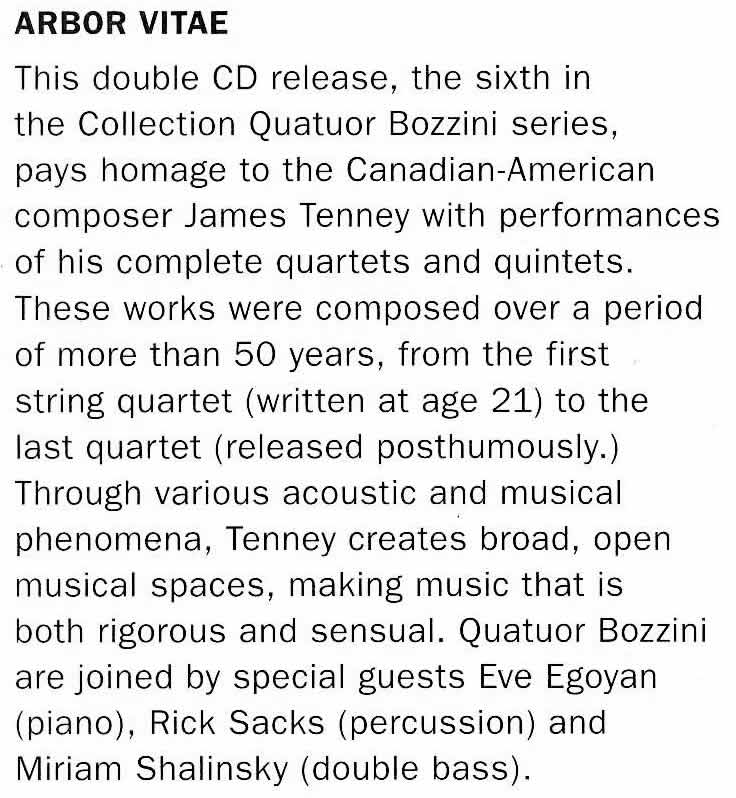
Kritik
Nie hatte er großes Aufsehens von sich und seiner Arbeit gemacht und die Medien haben ihn lange Zeit auch kaum beachtet. So konnte es kommen, dass man ihn als den berühmtesten unbekannten Komponist Amerikas bezeichnet hat: James Tenney, der als experimentell orientierter, antiakademischer und authentischer Typ durchaus in die illustre Reihe der großen Nachfolger des Charles Ives gehört.
Edgard Varèse hatte dem 1934 in Silver City/New Mexico Geborenen seinen Segen gegeben. Als Pianist studierte Tenney u.a. bei Eduard Steuermann (dessen konservative Haltung ihm freilich nicht behagte), als Komponist u.a. bei Carl Ruggles, Henry Brant und — elektronische Musik — bei Lejaren Hiller. Er begeisterte sich für die Ideen Cage und der New York School ebenso wie für die mikrotonalen Experimente eines Harry Partch. Er beschäftigte sich mit den polyrhythmischen Studien des Conlon Nancarrow und gehörte den ersten Ensembles der Minimalisten Steve Reich und Philip Glass an. Fluxus und Konzeptkunst beeinflussten seinen stilistischen Weg. Als Theoretiker und inspirierter Lehrer (u.a. bis zu seinem Tod 2006 am California Institute of Arts in Valencia) war er von großem Einfluss, doch seine faszinierende, oft radikal reduktionistische, auf mikrotonalen Klangverwandlungsprozessen beruhende Musik, wird erst in den letzten Jahren in weiteren Kreisen bekannt.
Auf unausgetretenen Pfaden
Nun hat das engagiert auf unausgetretenen Pfaden wandelnde Quatuor Bozzini, das 2007 u.a. mit dem Förderpreis der Siemens Stiftung ausgezeichnet worden ist, beim kanadischen Label Collection QB (Québec) eine Doppel-CD mit einem Programm vorgelegt, das für Tenney instrumentales Schaffen bis zu einem gewissen Grade repräsentative genannt werden kann. CD 1 birgt alle Streichquartette — von der 1955 entstandenen Miniatur des Studenten, über stochastisch Strukturiertes, die hochartifiziellen Werke Koan (1984) und Saxony (1978-84) bis zur abgeklärten Erkundung harmonischer Zwischenreiche Arbor Vitæ aus dem letzten Lebensjahr des Komponisten.
Suchen und finden
Auf CD 2 finden sich die nicht weniger tief in seelische Tiefenbereiche vordringenden, teilweise auch geradezu exstatisch anrührenden Quintette: die Cognate Canons mit Perkussion (1995), die Diaphonic Study mit hinzutretendem Klavier (1997) und Quintext I-V: Five Textures mit obligatem Kontrabass (1972); letztere wunderbar inspirierte Stücke, mit denen Tenney auf Essentielles in der Kunst von Feldman, Xenakis, Ruggles, Varèse und Partch Bezug nimmt. Gewiss: Vordergründig handelt es sich um Musik für Kenner; für solche aber, die um die eminente Relativität des Begriffs der Kennerschaft wissen. Für Leute ohne Scheuklappen, die suchen und die ins Finden verliebt sind.
Blogue
-
mardi 13 février 2018 / Général
Pour souligner le Prix Opus décerné au Quatuor Bozzini, DAME offre un rabais de 15% sur les albums du Quatuor de l’étiquette collection qb. Suite
-
mercredi 9 décembre 2009 / Général
Six disques DAME sont en nomination au Prix Opus 2009. Dans la catégorie «Disque de l’année — Musiques moderne, contemporaine», on retrouve Arbor Vitæ du Quatuor Bozzini et Miroir des vents de Quasar. Dans la catégorie «Disque de l’année … Suite

